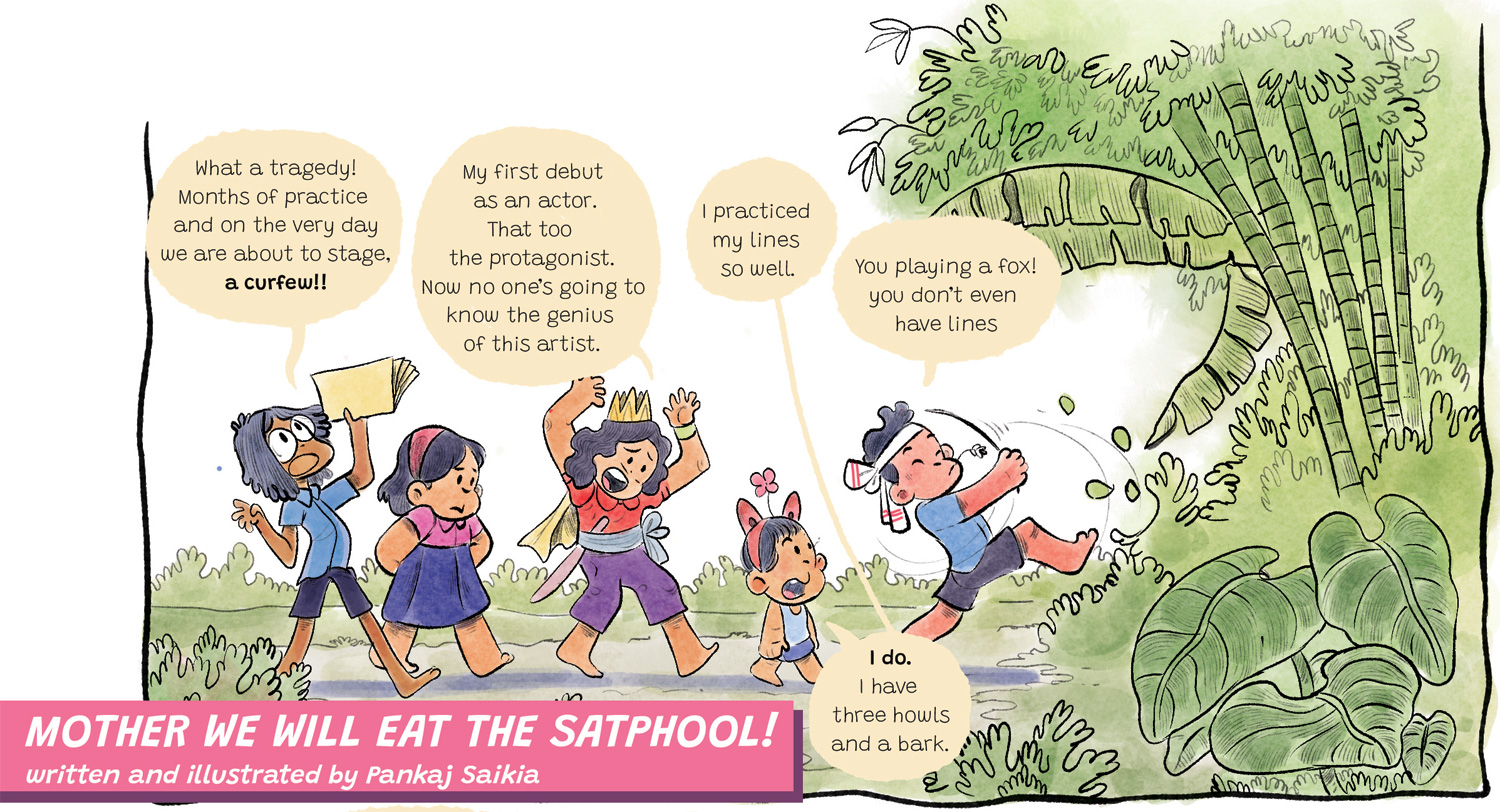
Vol 2 No 3 | Oct-Dec 2022
Mother We will Eat the Satphool!
Story and art by Pankaj Saikia
This story was inspired by the popular Assamese song “Maa ami Sadiyaloi Jamei” (“Mother we will go to Sadiya”) written by Keshab Mahanta and composed and beautifully sung by the legendary Khagen Mahanta: https://www.youtube.com/watch?v=UVwJkYF57E0
Here’s a modern rendition of the song: https://www.youtube.com/watch?v=C_LScYKlXnc
The lyrics were written as a rebellious response to a popular Assamese proverb or saying which goes:
Sadiya loi ne jaba
Satphool ne khaba
Kesa patot ne bandhiba lun
meaning
Don’t go to Sadiya
Don’t eat the Satphool
Don’t tie salt in raw leaves
In response, Keshab Mahanta writes,
Mother, we will go to Sadiya
Mother, we will eat the Satphool
We will tie salt in raw leaves
‘Sadiya’ is a real place in Assam, located at the state’s extreme north-eastern border with Arunachal Pradesh. It finds a reference in the local lore, probably because it is the farthest known frontier for the common folk. Hence “don’t go to Sadiya” lest you lose your way.
The existence of the Satphool however is debatable. Some say the Satphool does exist, and that the name refers to a water plant that grows somewhere near Sadiya. It is said that in olden days, salt used to be scarce in the Assam region, and there was therefore a practice of carrying salt tied in leaves. The leaves herein probably refer to the leaves of the Satphool flower.
The artist’s inspiration
The inspiration for the comic comes from my childhood experience of rehearsing for plays with my cousins. My summer vacations were mostly spent at my ancestral village, where almost half of the village households were related to us. My cousins would provide me with the scripts for the plays that they were rehearsing for their schools located in the village. I was brought in as a replacement actor who would help them rehearse. Funnily enough, I would have the entire script memorised and would take active part in the rehearsals. But when it came to the real play, I never even got the chance to witness them as they were often held after my summer vacations were over.
Hargila
The story involves the appearance by the majestic birds called Hargila (Greater Adjutant Stork) as the Dreaming Giants who show the pathway to Sadiya.
The Hargila or Greater Adjutant Stork is a large scavenging stork. Once it was widely distributed across south-east Asia. However, now in India, it is limited to the state of Assam. The IUCN classifies the bird as endangered, as there are only around 1,200 individuals left in the wild. The key threats to the species are human persecution, habitat destruction, felling of nesting trees, and drainage, pollution and degradation of wetlands.
Here’s a documentary on the Hargila:
https://www.youtube.com/watch?v=yeYV4UjsdxM
One large population of Hargila lives near the city of Guwahati. These birds are dependent on the wetlands nearby, such as the Deepor Bill. However, the wetlands have been facing continuous encroachment from building activities, and often finds itself an industrial dumping ground as well.
In this context, community conservation initiatives such as the ‘the Hargila Army’ have done much to conserve the habitats of these last of the flying giants. The Hargila Army is led by biologist Purnima Devi Barman. The group of all women conservationists from rural Assam are fighting to save the endangered Greater Adjutant Stork through grassroots efforts and female empowerment.

